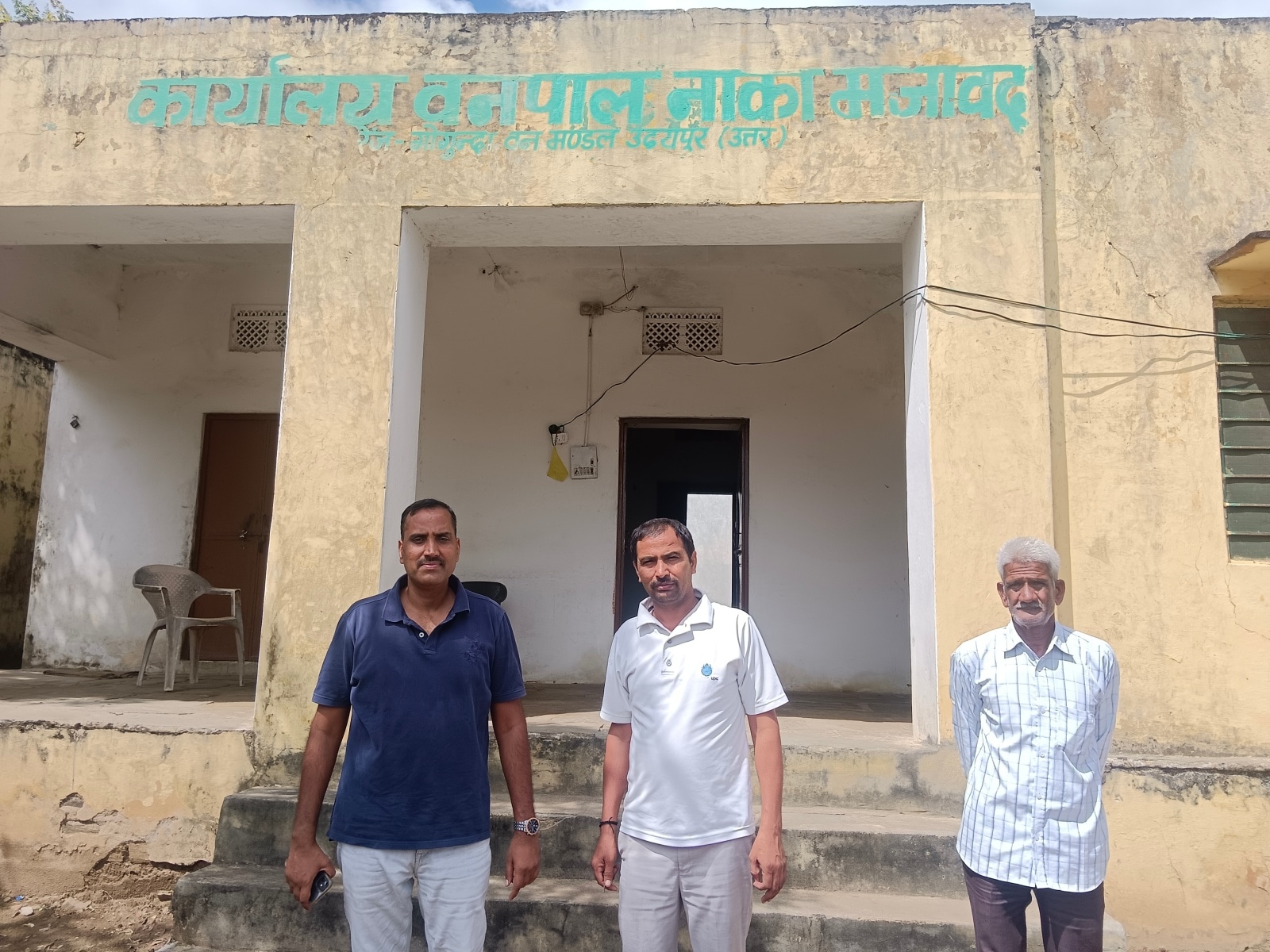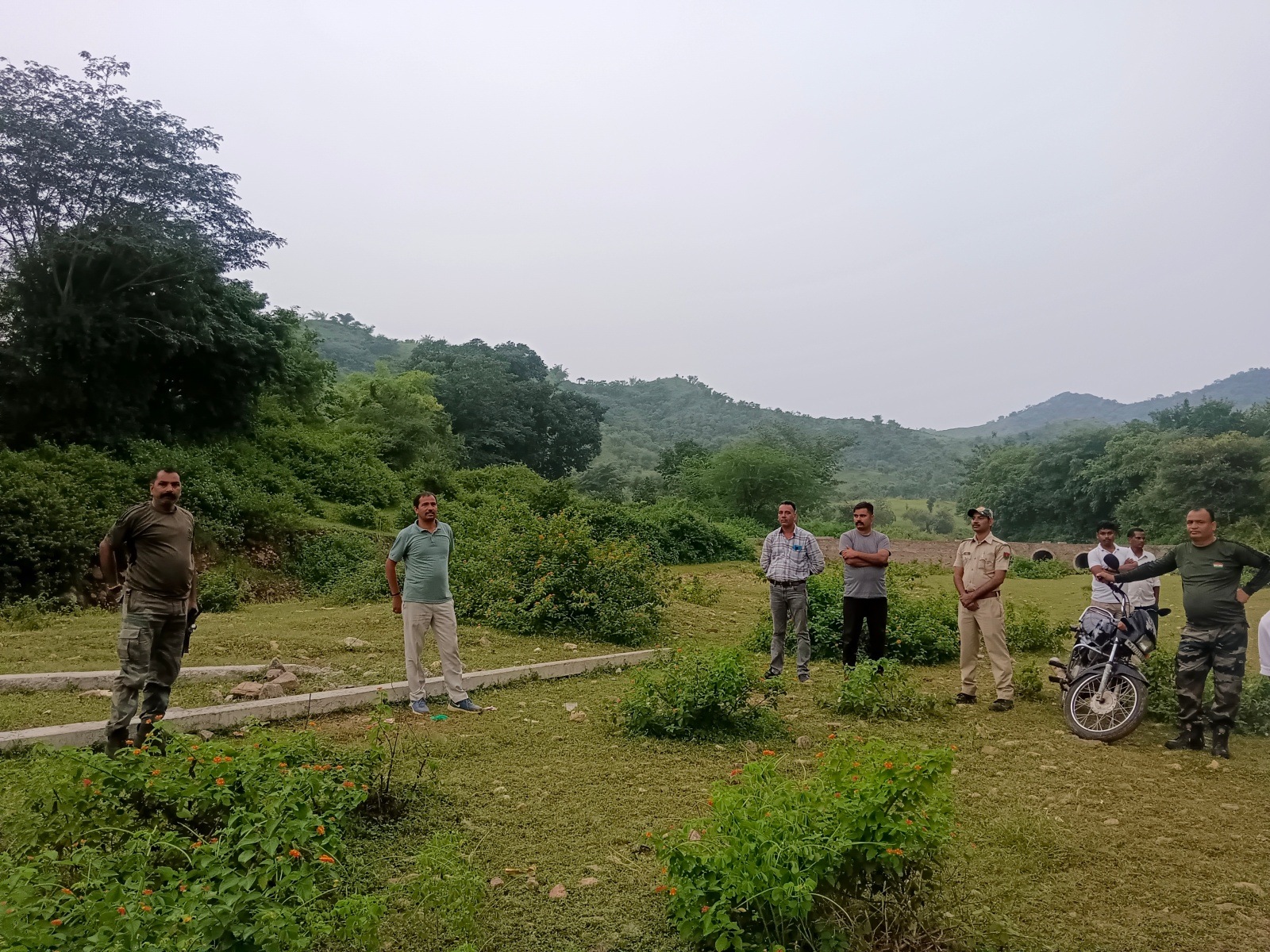6 kills and counting, leopards terrorise Udaipur villages; Army, drones in race against time
The latest victim, 60-year-old Gattu Bai, had gone to graze goats near Majawad village on Saturday morning. When she didn't return home by nightfall, her family alerted forest officials, who found her mangled remains some 300 metres from her home.
 Relatives of Khumaram, one of the victims of the attack, mourn at his house in Bhewadiya village. (Photo: Parul Kulshrestha)
Relatives of Khumaram, one of the victims of the attack, mourn at his house in Bhewadiya village. (Photo: Parul Kulshrestha)When their cows returned home alone at 7 pm on September 18, Keshav Bhil (21) knew something was wrong. His 16-year-old sister, Kamala, who had gone out to graze them in the forest that morning, was meant to return home by 4 pm.
When she wasn’t seen even by nightfall, village residents set out with torches to look for her.
“Early morning, around 80 men from the village searched for her in the forest and finally found her mutilated body deep in the forest,” Keshav says, his eyes welling up.
Kamala is among 10 people who have been killed in leopard attacks in the contiguous forest areas of Udaipur and Rajsamand since May. Six of them, including a five-year-old girl, were killed between September 19 and 30.
The latest victim was 65-year-old Vishnu Giri, a priest at a temple at Rathore ka Guda village in the Gogunda area. According to officials, Giri was sleeping in the courtyard of the temple when the leopard dragged him into the forest at around 4 am. In the morning, people saw a trail of blood and started a search that led to the discovery of his remains in the forest, around 150 metres from the temple.
 Relatives and villagers mourn the death of 16-year-old Kamala in Undithal village. (Photo: Parul Kulshrestha)
Relatives and villagers mourn the death of 16-year-old Kamala in Undithal village. (Photo: Parul Kulshrestha)
This came a day after forest officials found the remains of 60-year-old Gattu Bai, who had gone to graze goats near Majawad village on Saturday morning and did not return.
All of the attacks have occurred within a five-km radius of Gogunda range. News of the attacks has sparked a climate of panic in the five adjoining villages, including Kamala’s Undithal village.
The Udaipur range is home to the forest-dwelling Bhil tribe, of which Keshav and Kamala are part.
In the victims’ houses, funeral rituals are still taking place, with the serenity of the forest occasionally broken by the wails of the mourners.
Locals speak with a sense of fear and foreboding. Those who would travel to Udaipur city to work as daily wagers have stopped going. Night-time ventures have become a thing of the past. Activities such as farming and grazing of cattle are undertaken in groups of five or 10, and houses that were previously kept unlocked even at night are now firmly bolted.
Nothing like this has ever happened before, says Ganesh Kheri, sarpanch of Chhali Gram Panchayat.
“At first, we couldn’t believe it,” he says. “I have been calling people and telling them not to get out of their house until the department declares it to be safe. But for how long are they going to stay inside?”
As pressure mounted, the forest department captured two leopards from the area on September 24. Two others were caught on Saturday and Sunday. These breakthroughs came after forest officials teamed up with 20-30 Indian Army personnel who extended their help. The teams used specialised drone technology with a 10-km range to help track the animals.
But the continuing killings, despite the capture of some animals, confounded officials, who say their operations will continue until they see “one week without attack”.
Hunt for the leopards
It’s past 5 pm, and in the forest near Majawad, a walkie-talkie crackles and an official quickly answers: “Sabko bolo jaldi khaali karen areas…Shaam ho raha hai (Ask everyone to clear out quickly. It’s getting dark).
Around him, seven-eight other officials are setting up the bait – a goat is carefully put in a cage, with a tape recorder placed near it. The cage is set up where the leopard was last sighted, and carefully covered with tree branches.
The officials are part of a 30-member team working for the last 10 days to set up cages at six different places. Cameras are placed at strategic locations to capture the animals’ movements.
According to the forest department, there are six leopards in the Gogunda range and over 100 in the Udaipur forest area.
Forest officials explain the reason for the tape recorder – at night, when the goat falls silent, the tape recorder will replicate the goat’s bleating.
 Forest officials at the office in Majawad village. (Photo: Parul Kulshrestha)
Forest officials at the office in Majawad village. (Photo: Parul Kulshrestha)
“Leopards usually venture out in the evening or late night,” says Ajay Chittoda, Deputy Conservator of Forest of Udaipur North range, while inspecting a cage at the forest here. “They are usually shy animals but this kind of incident is unfortunate.”
The department is also taking the help of two shooters with tranquiliser guns. At night, seven-eight officials stay back in the forest, sleeping at Chhali and Majawad gram panchayat buildings and taking rounds several times a day.
To minimise risks, forest officials have been asking villagers not to venture into the jungle.
“These bushes are very dense and the leopard is a clever animal. It walks without noise… We have asked the villagers to not go inside the jungles for grazing cattle. But we understand that their livelihood is dependent on it,” Mahendra Singh, Assistant Conservator of Forests (ACF) Udaipur, says.
On Saturday morning, officials who went to check the cage at 7 am found a leopard inside. A second leopard was found Sunday morning. The animals are now being moved to Sajjangarh Biological Park, where the leopards proven to be ones behind the attacks will be kept until their death, say officials.
The forest department has yet to declare the leopards that have already been caught man-eaters. But they say two of the four leopards that have been caught, including the one ensnared on Saturday, have no canine teeth – the most important way to identify a man-eater.
 Forest officials scour in the Gogunda area forest range. (Photo: Parul Kulshrestha)
Forest officials scour in the Gogunda area forest range. (Photo: Parul Kulshrestha)
According to officials, an accident or old age could cause leopards to lose their canines.
“This makes it difficult for leopards to hunt animals and humans become easy prey since their skin is soft,” one ranger said.
DNA samples have been sent to the Wildlife Institute of India, Uttarakhand.
“If the victims’ samples match the contents of the leopard’s stomach, we can confirm that it’s the one attacking the victims,” Sunil Chidri, the Chief Conservator of Forest, Udaipur, says.
Meanwhile, wildlife activists put down the attacks to the declining prey base.
“Tourist places like Udaipur are expanding and encroaching on the wildlife area. Attacks on humans happen when the leopard gets inside the human settlement due to lack of space for movement and decline of prey base,” says Sunil Mehta, president of World Wilderness Congress (WCC), adding that the government “needs to think about its policy of mindless development”.
Officials, too, admit that it’s a likely cause.
“There has been a decline in the herbivore population in Udaipur, which has also forced the leopards to attack humans,” one official said.
In Bhewadiya village, some 2 km from Kamala’s house, villagers gather at the house of 48-year-old Khumaram Bhil, who died in a leopard attack on September 19 when he went out grazing goats with his 14-year-old son.
According to his family, it was Khumaram’s son who alerted the village of the attack.
Says his brother Maghesh Bhil: “The villagers gathered and went in search of Khumaram. Goats were found at the same spot, but Khumaram’s body was found on the other side of the hill. We complained to the forest officials but it’s of no use as we lost our brother.”







